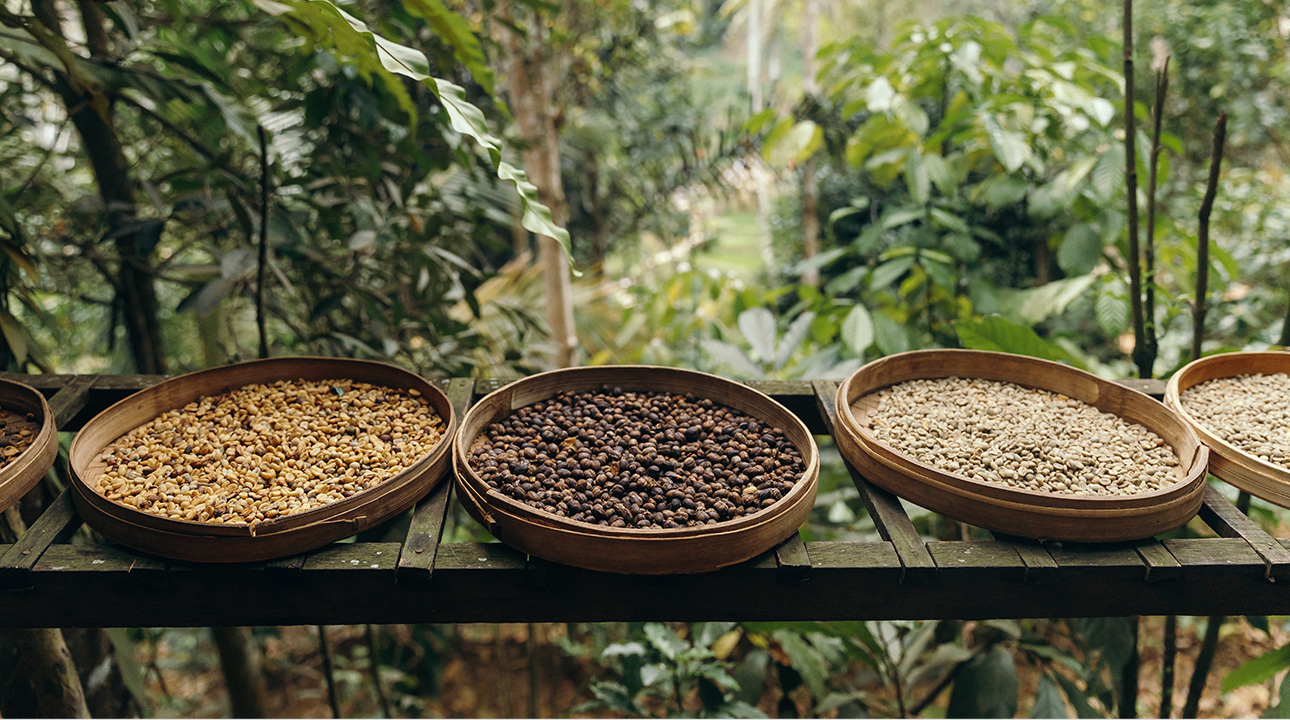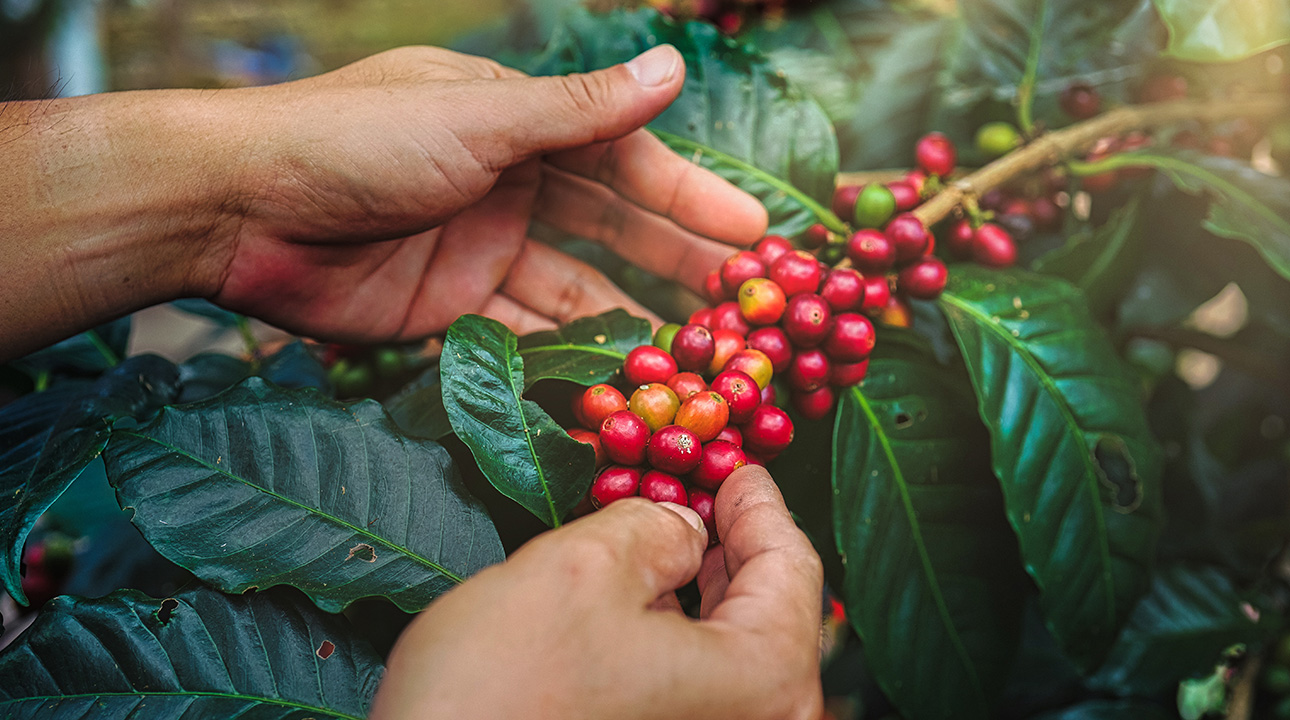
The coffee beans we buy and grind to brew our favourite beverage are the result of a transformation process that begins with the harvesting of the coffee beans and goes through their processing, blending, and roasting.
The coffee plant belongs to the Rubiaceae family and thrives in the tropical belt of our planet. The two cultivated species from which the cups of coffee we drink are Coffea Arabica and Coffea Canephora (Robusta). The fruit of the coffee plant is a green drupe when still unripe, turning red after 7-8 months. Once ripe, it is similar to our wild cherries, from which it takes its name. The coffee cherry consists of a skin (outer exocarp) and pulp (endocarp) that enclose the two seeds or kernels, which, in turn, are covered by a parchment casing and a silvery membrane.
Ripening is not simultaneous for all berries, so harvesting takes place over several weeks. In Brazil, harvesting takes place between May and September, in Central America from October to March, and in Africa from March to September.
The two systems used to pick coffee cherries are known as picking and stripping. The first method is carried out manually: workers select only ripe coffee cherries and return to the same plant a number of times over several weeks. In this way, a homogeneous, high-quality harvest is achieved. Stripping, on the other hand, is performed in a single step by workers or using special machines that pick all the coffee cherries, including those that are unripe, or which have already fermented.
After harvesting, the drupes are checked to remove unripe or overripe fruit, and the processing stage then begins. This is the process by which green coffee beans are obtained, and ready to be exported. There are three coffee cherry processing methods: dry, wet and semi-washed. In the first, the coffee cherries are spread out in thin layers and left to dry in the open air for 2-3 weeks. With this method, 'natural coffee' is obtained.
However, with wet processing, the coffee cherries are stripped by a machine and the seeds are left to ferment in large tanks of water for 1-2 days. From this process, washed or 'mild' coffee is obtained.
In the third method, semi-washed processing, the cherries are de-pulped and demucillaged by a special machine, thus avoiding the fermentation phase, and the coffee is dried in the sun or in driers. The coffee blends thus obtained are called 'semi-washed'.
Green coffee ready to be shipped to the country of destination is packed in 60 or 69-kg jute sacks and is transported in containers.
Once the coffee beans have arrived at their destination, to attain the highest quality, the most attentive roaster can adopt further cleaning and sorting methods such as blowing, skewering, densimetric sorting and optical sorting. So professional coffee tasters are in charge of blending: the art of mixing different types of coffee to achieve well-defined flavours.
After being blended, the coffee beans are roasted through flows of hot air, gradually modulating the temperature, and thus obtaining different results depending on the type of preparation for which the product is intended: mocha, filter or espresso.

With the SMEG BCC13 Bean to Cup coffee machine, the aroma of coffee spreads throughout your home: simply fill the container with coffee beans, and at the touch of a button, you can brew your favourite beverage.
The CGF11 coffee grinder is an essential small household appliance to grind coffee beans at home. With different setting levels (fine, medium, coarse) it is possible to obtain the perfect powder for every coffee machine.